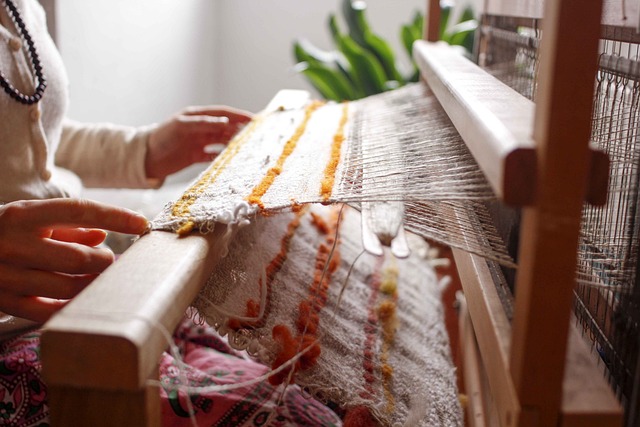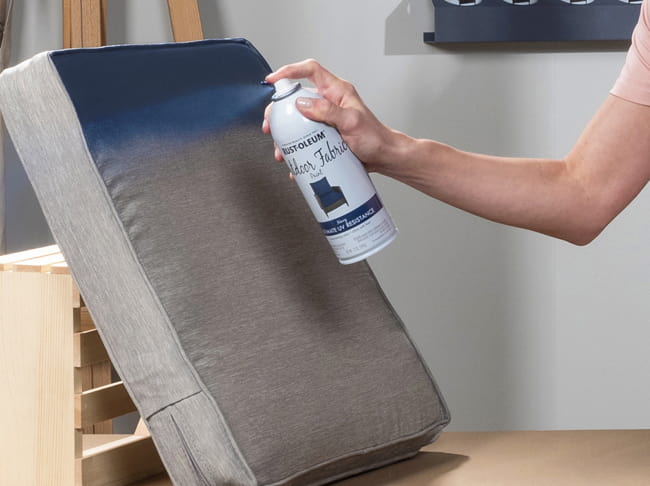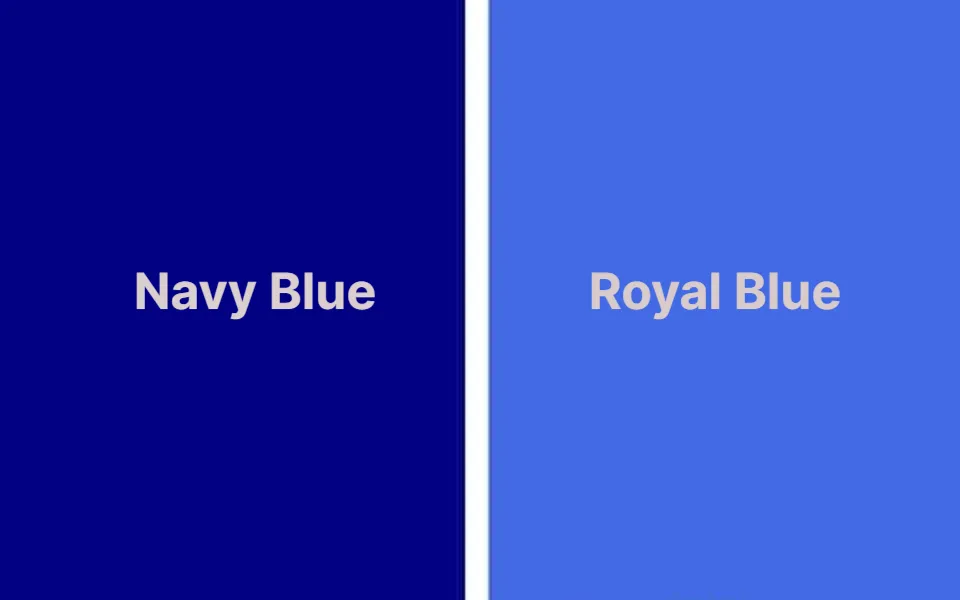I’m sure you’ve seen those cool projects using spray paint on fabric on Pinterest and Instagram. Can you do that without destroying your fabric, though?
You can spray paint on fabric. Utilizing a variety of spray paints made specifically for textiles, you can add color to fabric. The method can produce aesthetically pleasing and vibrant effects. However, not all spray paints can be used on fabric. Make sure the paint is non-toxic and appropriate for the fabric.
Fabric can be painted in a variety of ways, and each technique has advantages and disadvantages of its own. The use of spray paint is a common method for painting fabric. To learn how to do it, continue reading!
Can You Spray Paint Fabric?
You might be perplexed as to why anyone would want to spray paint fabric when there are so many options for fabrics and colors.
The available colors evolve over time. Markets constantly see the introduction of fresh, vibrant color schemes. So much so that what may have been fashionable a year ago will likely be making your décor look dated today.
Replacing all of your soft furnishings and clothing to stay in style can get pricey. What better way to stay current than to use paint to update your textiles? Compared to redecorating your entire home and wardrobe, it’s quick, simple, and reasonably priced.
Certain fabrics work better with spray paint than others. Before you begin your color revitalization project, it’s best to determine the material you will be painting. Spray painting is difficult to do on leather, for instance. Since it is not porous, the color cannot be retained. Which implies that it will gradually peel off. Utilizing a dye made specifically for leather is the best way to change the color of the leather.
The fabric’s texture should also be taken into account. Some paints have the ability to transform a supple, malleable, comfortable fabric into something that has the consistency of hard concrete. Make sure to read the instructions on the spray can for coverage if you want the fabric’s texture to remain the same after painting.
Natural fibers like cotton, linen, rayon, and silk make excellent materials for spray painting. The retention of color is improved by a tighter weave. Less vibrant results are frequently the result of looser weaves that tend to allow the paint to seep through.
Suggested reading: One of the best ways to quickly improve the appearance and ambiance of a space where you probably spend a lot of time is by updating your kitchen cabinets. So, how much does it cost to paint kitchen cabinets?
What Fabrics Can Be Spray Painted?
100% Cotton
Natural fabrics like cotton are the best kind to use when spray painting. 100% cotton is durable, breathable, and easy to work with.
Cotton is available in a variety of weights, from lighter, sheer fabrics like seersucker to heavier cotton items like denim and canvas. Spray painting cotton is a simple way to alter the color of your shoes, clothes, or furniture.
You can make some amazing effects by taking advantage of the fabric’s propensity to wrinkle. For instance, tie-dying makes use of the creases to create quick and distinctive patterns. Also known for shrinking is cotton. So, to account for potential shrinkage, make sure to pre-wash the fabric before painting.
Polycotton
A mixture of polyester and cotton is known as polycotton. The percentage of polyester to cotton can range from 50/50 to a lower 30/70 ratio. The need for ironing is generally reduced with polycottons because they resist creases better.
The amount of polyester in this blended fabric may change how well it absorbs paint. Additionally, it might make the fabric more prone to heat damage. In the case of spray paint, both of which may be a problem. Before committing to the entire project, test a small portion of the fabric to see if it can be painted.
Wool
Wool is a natural fiber that can also be painted or dyed. The one thing to be aware of with wool is that any existing color may bleed into your new color. It resembles bleaching dark hair blonde in some ways.
The blonde will appear more orange unless you first remove the dark color. To determine the impact the original wool color will have on your chosen shade, test the paint in a small area.
Wool fibers are naturally buoyant, so painting can flatten them. Choose a flexible paint to avoid hardening the fabric. When wool has retained its natural spring, it is at its softest.
Silk
Silk fabrics can be painted in a few different ways. Spray paints aren’t used in the majority of techniques, though. You can use a paintbrush and special silk paint to produce some stunning designs. When silk painting with the serti technique, borders made of a material called Gutta or Resist are used to draw designs onto the fabric.
You simply color in the various sections after the design has been drawn on the fabric. Refuse, and Gutta will stop the colors from leaking into the adjacent space.
If you want to change the color of the silk entirely, using a silk dye would be simpler than spray painting it. Due to the heat sensitivity of silk, many spray paints need heat to set into the fabric. Heat and silk might not work out too well.
Linen
Natural fibers are woven into linen, a fabric that is similar to cotton. It can be used to produce some stunning designs but has the same propensity to wrinkle.
Because linen is so absorbent, it’s a great material to paint on. Spray painting on linen is simple and efficient, and it can be done on anything from clothing to furniture.
Polyester
Avoid trying to paint synthetic materials like polyester for the best results. Heat, which can be a challenge for some synthetic materials, is one of the essential elements in getting spray paint to adhere to fabric. When exposed to excessive heat, polyester in particular has a propensity to melt.
Use fabric dyes rather than paint when working with synthetic materials. Ensure that the dye is intended for polyester.
Spray Painting Different Kind of Cloth Fabrics
The use of spray paint extends beyond clothing; in fact, it can be used indoors to fix up some cushions or to make an outdated piece of furniture blend in with the design of a space. Regardless, there are a few tricks to help your interior design look vibrant and bold without having the dreaded streaks or crackles.
Ccloth Furniture
Yes, you can. In fact, you can use the same spray paint you used to decorate your clothes to spray-paint your furniture. However, for the best results, use upholstery fabric spray paint. The best way to spray paint furniture is to apply many layers, ideally 2–5. Due to frequent use of items like sofa cushions, it is crucial to ensure that the paint is thoroughly applied.
Applying it continuously while doing a layer will help you prevent streaks. Before the desired color properly shows through, there will need to be several coats of spray paint. Before adding another layer, make sure the paint is completely dry to prevent crackling.
Lamp Shades
Cloth lamps can be painted with spray paint; in fact, because of their size and shape, they make spray painting a breeze. Remove the shade from the rest of the appliance and hide the metal strips that attach the shade to the stand. The conical surface will have a nice, smooth layer of color if the paint is evenly sprayed across it.
In some cases, especially if you’re spraying the outside a darker color, it can look nice to leave the lamp shade’s original color on the inside. Before moving it after spray painting, wait an hour to make sure it is completely dry. Except in direct sunlight, spray paint on lamp shades is very long-lasting and shouldn’t fade for years.
Shoes
Spray painting shoes can be difficult because you need to tape all the eyelets to keep them from being painted, but it is definitely possible. Spray painting shoes can be a cool way to express personality through a fun hobby. It’s especially popular among teenagers and young adults. Spray painting shoes requires that you tape off the eyelets, the soles, and any other areas you want to keep clean.
Additionally, I suggest wearing converse because the fabric of these shoes blends well with paint. Additionally, you have the option to add designs or images by brushing on bottled fabric paint. A painted design can have a colorful backdrop created with spray paint.
Cloth Blinds
Without spending a lot of money, spray painting is a fantastic way to give blinds and the room they are in a new lease on life. If they have been active for a while, it is best to remove them from the wall and give them a thorough cleaning. You may use all-purpose cleaner, and doing so will aid in the fabric’s proper absorption of the spray paint.
Applying the spray paint to cloth blinds is a breeze if you use an even up-and-down motion. Applying the layer continuously up the material, as this is necessary to prevent streaking, may prove to be more challenging. Three to two layers should be used, and they should dry for 24 hours. In the absence of this, any dripping loose paint might create beads on the surface.
Cloth Car Seats
The benefit of spray painting car seats is that you can leave them in the vehicle; however, removing them can be simpler. The drawback is that you need to make sure that the area around the project is entirely covered; otherwise, paint may get on areas that you don’t want painted.
Car seats require a brush to work the paint into the fabric’s interlacing fibers because they are quite thick, unlike the other items. So, after evenly applying the spray paint layer, you can gently brush the seat to help the paint settle into the fabric. Allow it to dry overnight; you shouldn’t use this seat for at least 24 hours. It’s also a good idea to leave any of the doors open while it dries.

How to Spray Paint Fabric?
To spray paint fabric, you’ll need the following tools and supplies:
- A cardboard
- Spray paint for fabric
- Detergent
- A bucket of water
- Pegs
- A hanger
Wash the Fabric
The fabric must first be washed in water and detergent, even though it may seem unnecessary to do so. This is done to get rid of dirt. Additionally, prior to painting, some materials, like cotton, must be pre-washed. Cotton has a tendency to shrink, which is why. So first, wash the fabric.
Hang the Fabric
Use a hanger to hang the fabric once it is ready. Using a hanger might be challenging if the fabric is a large piece. So you can flip the fabric over a rope and secure it with pegs.
The fabric should be sprayed in this manner. To avoid overspraying, it gives you a good view of the fabric. Additionally, you can wipe away extra paint without rubbing it into the fabric.
Put a Cardboard Between Each Side of the Fabric
To avoid painting both sides of the fabric, place a piece of cardboard in between them.
For instance, you might want to paint the front of your shirt cream and the back black. You’ll spray the black paint on the front and back if there isn’t cardboard in between the two sides. Also being sprayed on both sides will be the cream paint.
The cardboard acts as a barrier to keep the paint in its intended location.
Spray the Fabric
Spraying the fabric comes next. Make sure the paint is properly mixed before spraying it on the fabric. Shake the can vigorously for about 60 seconds to accomplish this.
Don’t pull your arm back while spraying. You should use sweeping motions when painting. Don’t bend your wrist and keep your arm straight to avoid creating an arch. Up to four coats of paint can be sprayed onto the fabric. Make sure to give each coat enough time to dry. Do not forget to use cardboard.
Spray the fabric on one side, remove the excess paint with a damp cloth, and then let the fabric air dry for at least an hour. Spray the opposite side later. Once more, use a shield or cardboard.
Leave the Fabric to Dry
The fabric must dry before proceeding with this project. In some circumstances, heating or baking the paint will be necessary to get it to set in the fabric. If the paint needs to be heated, consult the manufacturer’s instructions.
Can You Spray Paint Clothes?
Spray paint is indeed safe to use on clothing. After spraying, all that’s left to do is use heat to seal it in.
Using acrylic fabric paint and a heat-sealing iron will yield the best results, despite the fact that there is no particular type of spray paint designed specifically for clothing. Regular spray paint and an iron can also be used.
Can Curtains Be Spray Painted?
Your curtains can be sprayed with paint. Again, after the fabric dries and before washing, you just need to seal it with heat. It’s not very useful if you’re spray-painting a sheer curtain. For this project, it’s typically best to stick with acrylic fabric paint or choose another paint type that will adhere to the fabric without permanently securing it.
Does Spray Paint Wash Off Clothes?
Spray paint doesn’t dissolve in water and is designed to adhere to just about any surface. As long as you let it dry before putting it in water, there is very little chance that it will wash off your clothing.
On the other hand, there’s always a chance that tiny amounts of paint from your clothes will transfer to other materials or surfaces if they come into contact. After your project dries, you must use heat to seal it if you don’t want this to occur.
Can You Use Regular Spray Paint on T-Shirts?
The short answer is yes, but there are some pretty significant qualifications in the long answer. Spray paint adheres to and dries on the surface of most surfaces, including fabric. It might not stay there permanently, though. Whether you purchase an expensive name brand or an off-brand item is irrelevant. If the paint is intended to adhere to fabric, water will always wash it off.
Regular spray paint can be used more often if you let it dry for 24 hours before washing, but that leaves you with little time to work on your project or maintain its impeccable appearance. Heat sealing your paint job is the best way to ensure that it lasts.
Can You Use Regular Spray Paint on Fabric?
Anything from cars, fences, and fabrics can be painted with spray paint. Metal, plastic, wood, and fibers are just a few of the materials that can be used to make various products. For each one, paint is available.
Metal, wood, and plastic are the typical materials for regular spray paint. A specific mixture of non-toxic ingredients known as fabric spray paint is made to come in close contact with the skin of both people and animals.
Your health might be in danger if you use spray paint meant for metal on your t-shirt. Infection, rashes, or an allergic reaction could result from it. Additionally, hugging your dog may be harmful or even fatal to them! Always use the type of paint that is recommended for the item when painting.
Protect Your Fabric With a Sealer First
The use of an acrylic sealer is the most effective method of shielding your fabric from spray paint. After each step, this will keep your paint in place so that you won’t have to worry about it smudging during washing or ironing.
Don’t Go Cheap on the Paint
Use a high-quality acrylic sealer to ensure that your paint adheres to your fabric. Design Master from Walmart is the cheapest option. Don’t bother purchasing a can if it costs less than $5. Design Master takes a while to dry and doesn’t always stick to fabric well. You’re better off using Elmer’s glue since this type of paint is just colored glue.
Don’t Use Iron-On Vinyl Fabric Paint
Some people think this kind of paint will adhere to your fabric without securing it in place by sear. Contrary to popular belief, heat-transfer vinyl adheres when an iron passes over it because the glue behind it melts. This kind of paint won’t heat seal; instead, it will smear into your fabric if you attempt to do so.
Read about Can You Paint Concrete?
Frequently Asked Questions
How Do You Care for Spray Painted Fabrics?
The fabric should last forever if you successfully seal it with heat. In spite of this, as the paint wears off, the crackle effect is probably going to get weaker over time. Applying more heat and allowing it to cool before washing it once more will try to revive this effect.
How Long Does Spray Paint Take to Dry on Fabric?
This depends on the fabric you use and how thickly you spread the paint. Prior to starting your project, make plans because it may take some fabrics several hours to dry completely.
How Long Will Spray Paint Stain Fabric?
The majority of spray paints don’t leave stains on fabric, but you should always test a small area first to make sure. Also keep in mind that even if the paint leaves a stain, you can’t get all of it off. Instead, handle it like an oil stain and remove it with rubbing alcohol or orange oil remover.
How Long Will Spray Painted Fabric Last?
This depends on the fabric you use and how thickly you spread the paint. The paint may eventually deteriorate if you use a fading-prone fabric. Finally, prolonged exposure to heat can cause some paints to crack.
How Do You Keep Paint from Cracking on Fabric?
Make sure the paint has good adhesion to prevent the fabric from cracking. After drying, it needs to be heated and set with an iron. Spray enamel, clear acrylic spray, or embroidery floss sealant should all be used to seal your project.
Will Spray Paint Make Fabric Stiff?
It’s true that spray paint can stiffen fabric. If that’s a concern with your project, you’ll need to seal it after it dries with either an acrylic spray or embroidery floss sealant.
How Does Heat Effect Fabric Spray Paint?
You must act quickly to set the paint if heat is applied to fabric-containing material. In order to last longer and avoid cracking over time, the majority of paints need heat settings.
What Kind of Spray Paint is Permanent on Fabric?
The majority of spray paints aren’t thought to be permanent, so they might fade with time. Some paint brands, though, can withstand repeated washings as well as exposure to the sun and heat.
Does Spray Paint on Fabric Fade?
Yes, fabric painted with spray paint will eventually fade. Because of this, after spray painting it, you should seal it with something like clear acrylic spray or embroidery floss sealant to keep the paint from fading.
Will Spray Paint Crack on Fabric?
On fabric, spray paint does have a good chance of cracking. With acrylic paints, this is particularly typical. Use Dupli-Color Vinyl and Fabric Coating or Tulip ColorShot Upholstery Fabric Spray Paint if you want your project to withstand repeated washings of the finished product.
Will You Be Able to Iron on Fabric Spray Paint?
You can iron it if you used a paint that doesn’t require searing. However, over time and in exposure to heat, some paints may harm the fabric. Utilize products like Dupli-Color Vinyl and Fabric Coating or Tulip ColorShot Upholstery Fabric Spray Paint if you want your project to withstand repeated washings.
How to Remove Spray Paint from Fabrics?
Spray paint can be easily removed from clothing. All you have to do is soak the paint in mineral spirits, hot sauce, citrus cleaner, orange oil remover, rubbing alcohol, or nail polish remover. After that, let it sit for 20 minutes before thoroughly soaking it in water once more. Repeat this procedure until the paint is removed if any is left.



